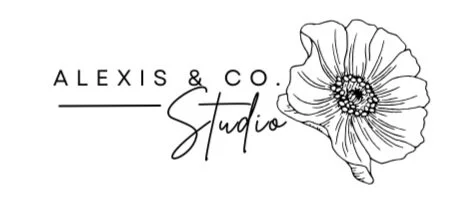What to Expect During an Art Therapy Session
Starting something new can bring up all kinds of emotions—curiosity, uncertainty, maybe even a little nervousness. If you’re considering art therapy, it helps to know what actually happens during a session. Spoiler: it’s not about being “artistic,” and it’s definitely not about making perfect pictures. Art therapy is a space to explore, express, and process—on your own terms.
You’ll Be Greeted with Respect, Not a Test
When you arrive—whether in person or virtually—you’ll be welcomed into a calm, judgment-free space. The room might feel more like a creative studio than a traditional therapy office. You might notice shelves of materials: paints, pencils, markers, clay, textured papers, objects to build with, and sensory-based tools. These aren’t just art supplies—they’re therapeutic tools selected to support a wide range of needs and experiences (Hinz, 2020; Malchiodi, 2018).
You won’t be asked to perform, draw something specific, or talk about anything you’re not ready to. The pace is led by you. You might start with a check-in, a grounding activity, or just a simple “what would feel good to work with today?”
Artmaking: A Bridge Between Inner and Outer Worlds
During most sessions, you’ll be invited to engage in some form of artmaking. That could mean drawing, collaging, building, or working with clay or other sensory media. Some days, it’s structured with a prompt or goal in mind—other times it’s open-ended. All of it is purposeful.
Through the process of creating, your nervous system begins to settle. Art can bypass the parts of the brain that get stuck in words or analysis and access emotions stored deeper in the body (Lusebrink, 2004; van der Kolk, 2014). Whether you're working through anxiety, grief, trauma, or personal growth, the image can carry what words cannot.
In group sessions, you’ll create in a shared space alongside others. You’ll have the option to share, reflect, or simply observe. Group sessions often include a moment of collective discussion, mindfulness, or closure at the end. Participation is always by choice.
Your Therapist Is a Guide, Not a Critic
An art therapist is both clinically trained and artistically informed. They don’t interpret your art for you or assign meaning to what you make. Instead, they might ask reflective questions, notice patterns, or gently connect your process to broader themes in your life.
They’re also trained in trauma-informed care, which means they prioritize your safety and consent at every step (Malchiodi, 2020). Sessions are paced with care. You’ll never be pushed into “processing” before you're ready. Some days might feel light and playful. Others might feel deep and raw. Both are valid—and both are held with respect.
Closure and Integration
Art therapy doesn’t end when the art stops. Most sessions include time for reflection and grounding—whether through journaling, breathing exercises, or simply looking back at what was created. In some sessions, you may store your artwork at the studio; in others, you may take it home or leave it behind. Your therapist can help you decide what feels right for you.
Over time, the studio becomes more than a room. It becomes a place where your story can unfold, shift, and heal.
Final Thoughts
What you can expect during art therapy is spaciousness. You’ll have choice, voice, and the freedom to be exactly where you are—without pressure to perform, produce, or explain. Whether you're joining a group or meeting one-on-one, you’ll be supported in discovering new ways to express, regulate, and connect.
The creative process isn’t always linear, but it is deeply human. And sometimes, picking up a brush, a lump of clay, or a scrap of paper is the first step toward something new.
References
Hinz, L. D. (2020). Expressive therapies continuum: A framework for using art in therapy (2nd ed.). Routledge.
Lusebrink, V. B. (2004). Art therapy and the brain: An attempt to understand the underlying processes of art expression in therapy. Art Therapy, 21(3), 125–135. https://doi.org/10.1080/07421656.2004.10129496
Malchiodi, C. A. (2018). The Art Therapy Sourcebook (2nd ed.). McGraw-Hill Education.
Malchiodi, C. A. (2020). Trauma and expressive arts therapy: Brain, body, and imagination in the healing process. Guilford Press.
van der Kolk, B. (2014). The body keeps the score: Brain, mind, and body in the healing of trauma. Viking.
